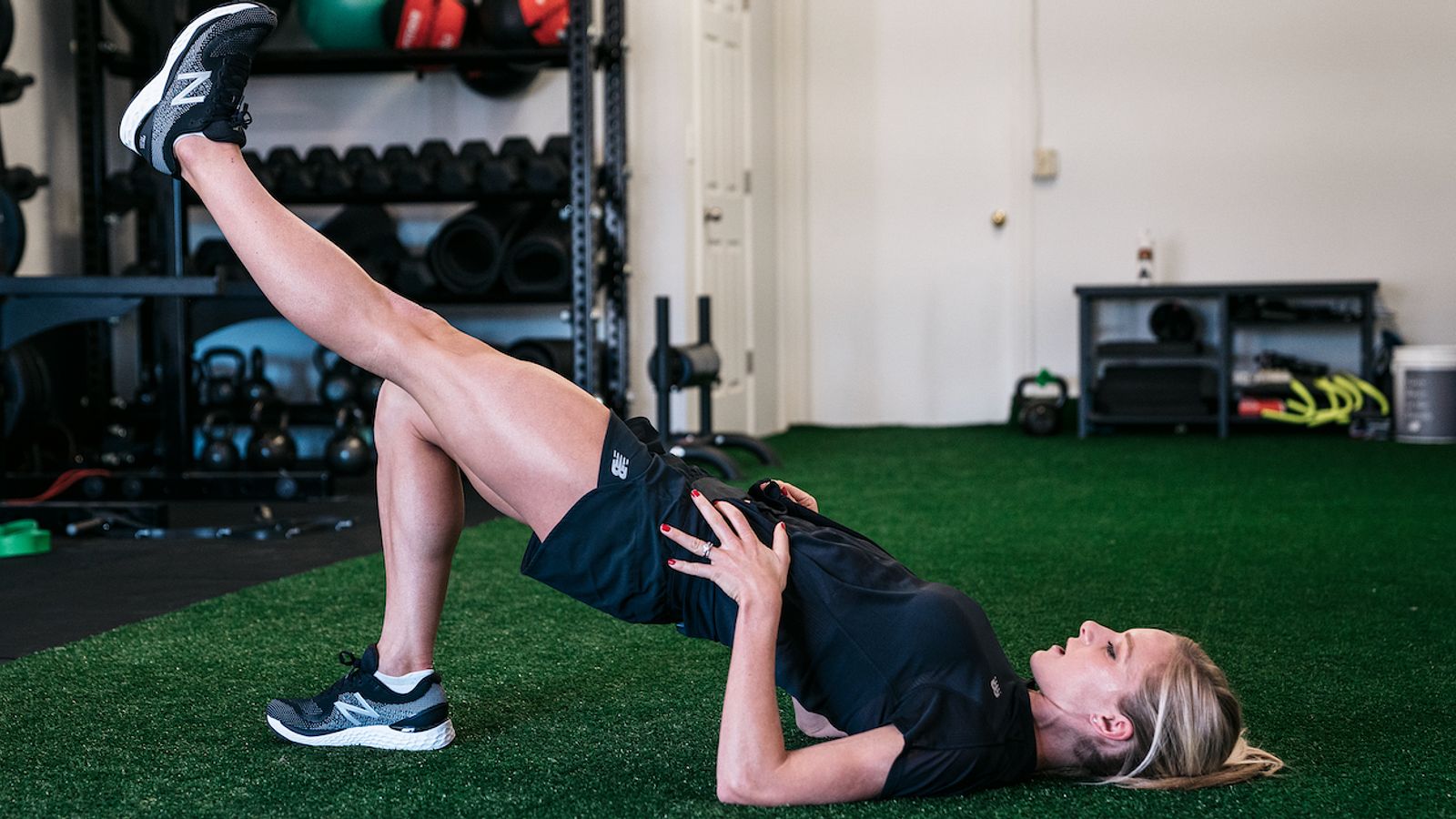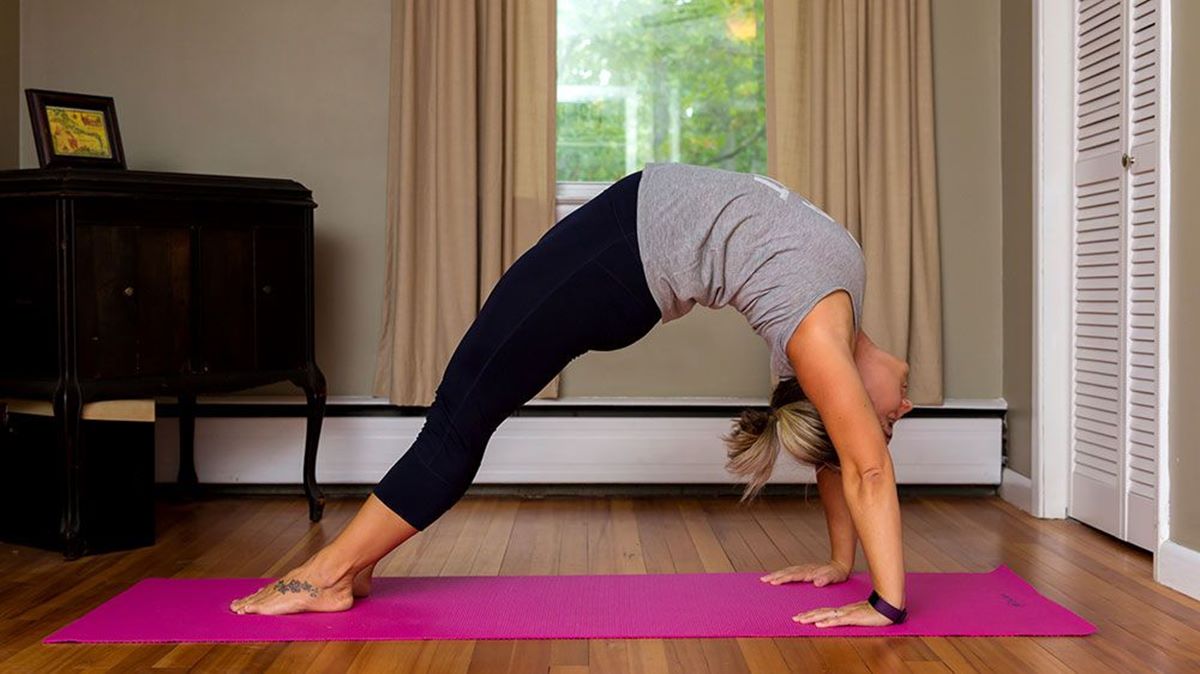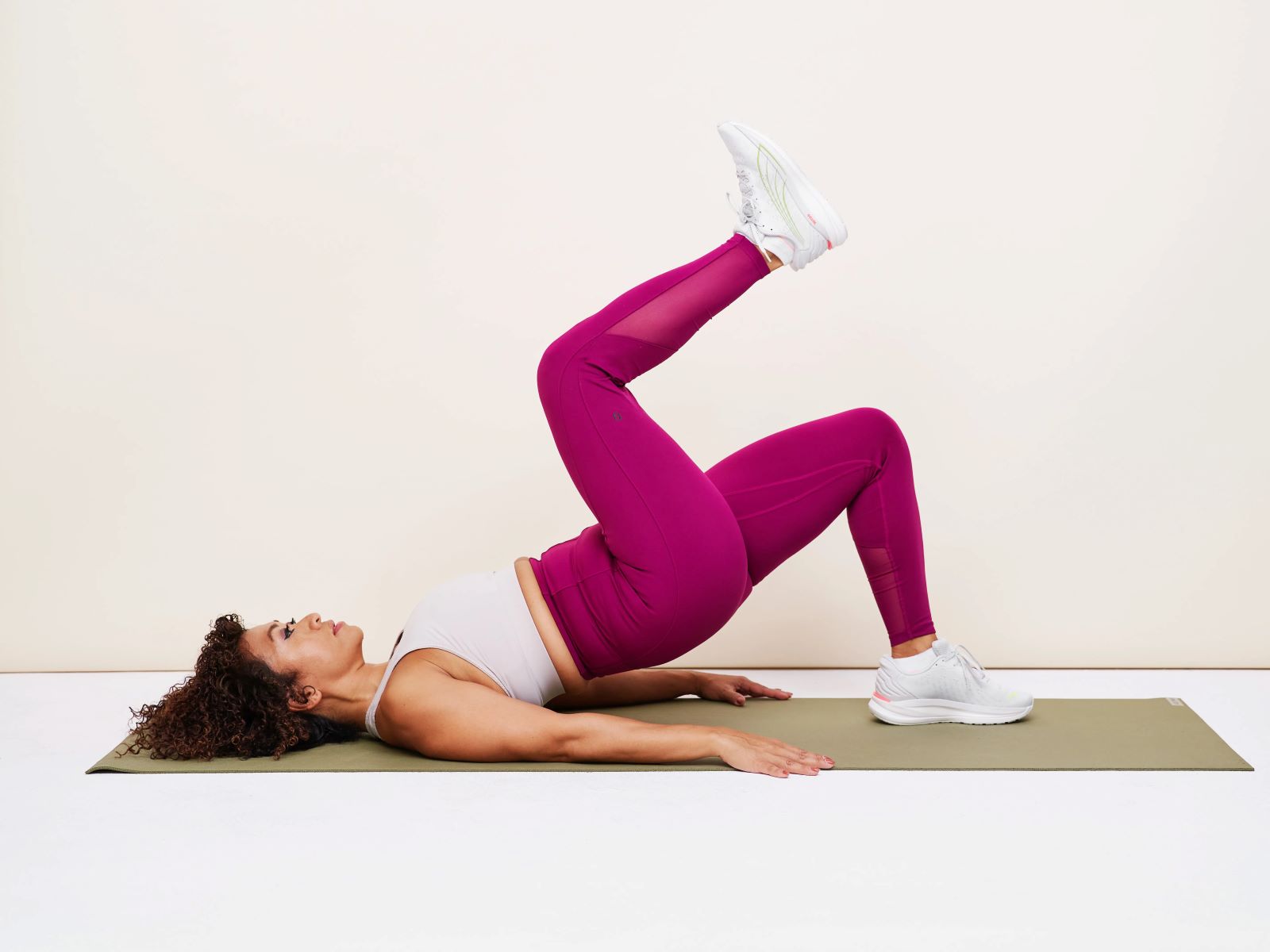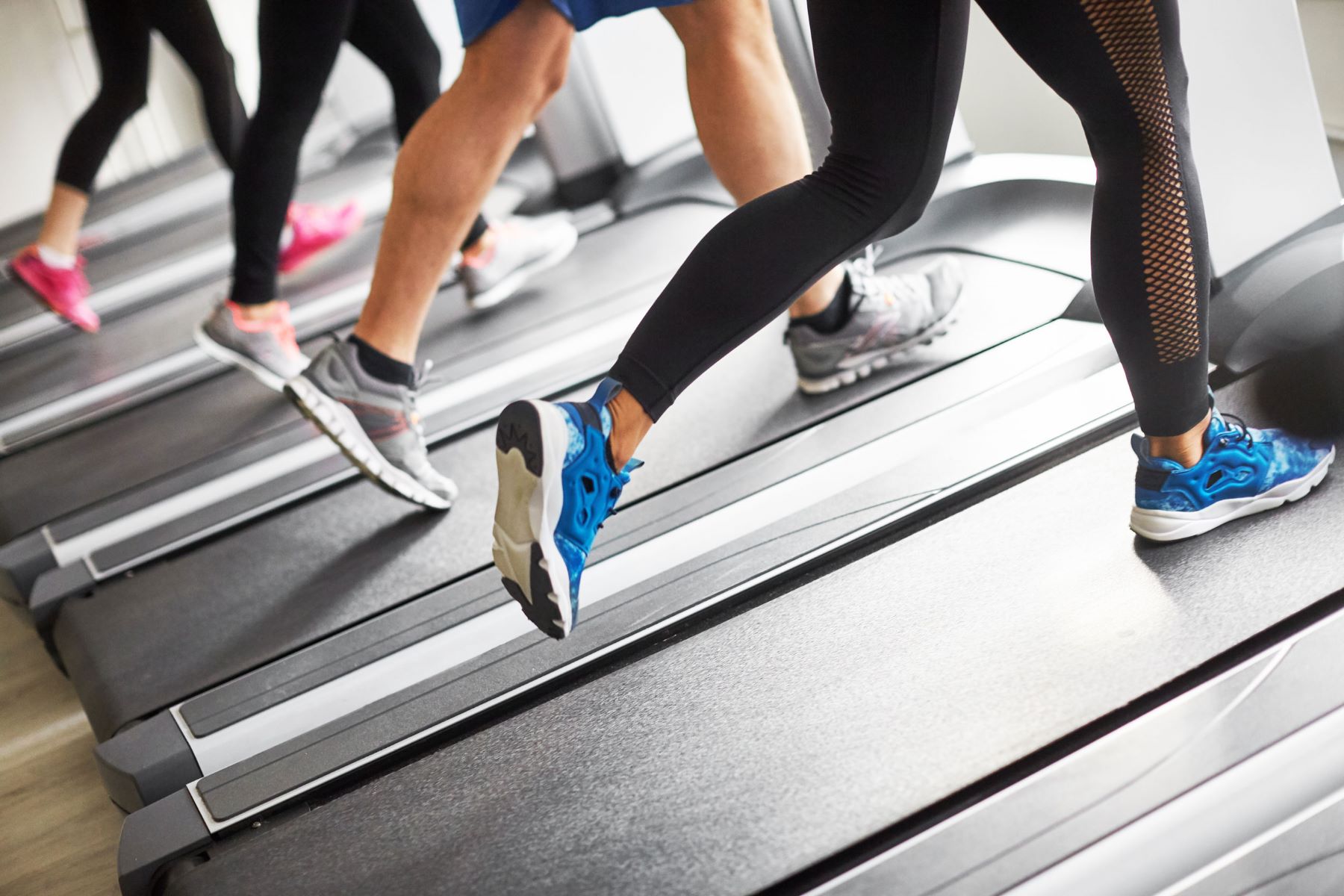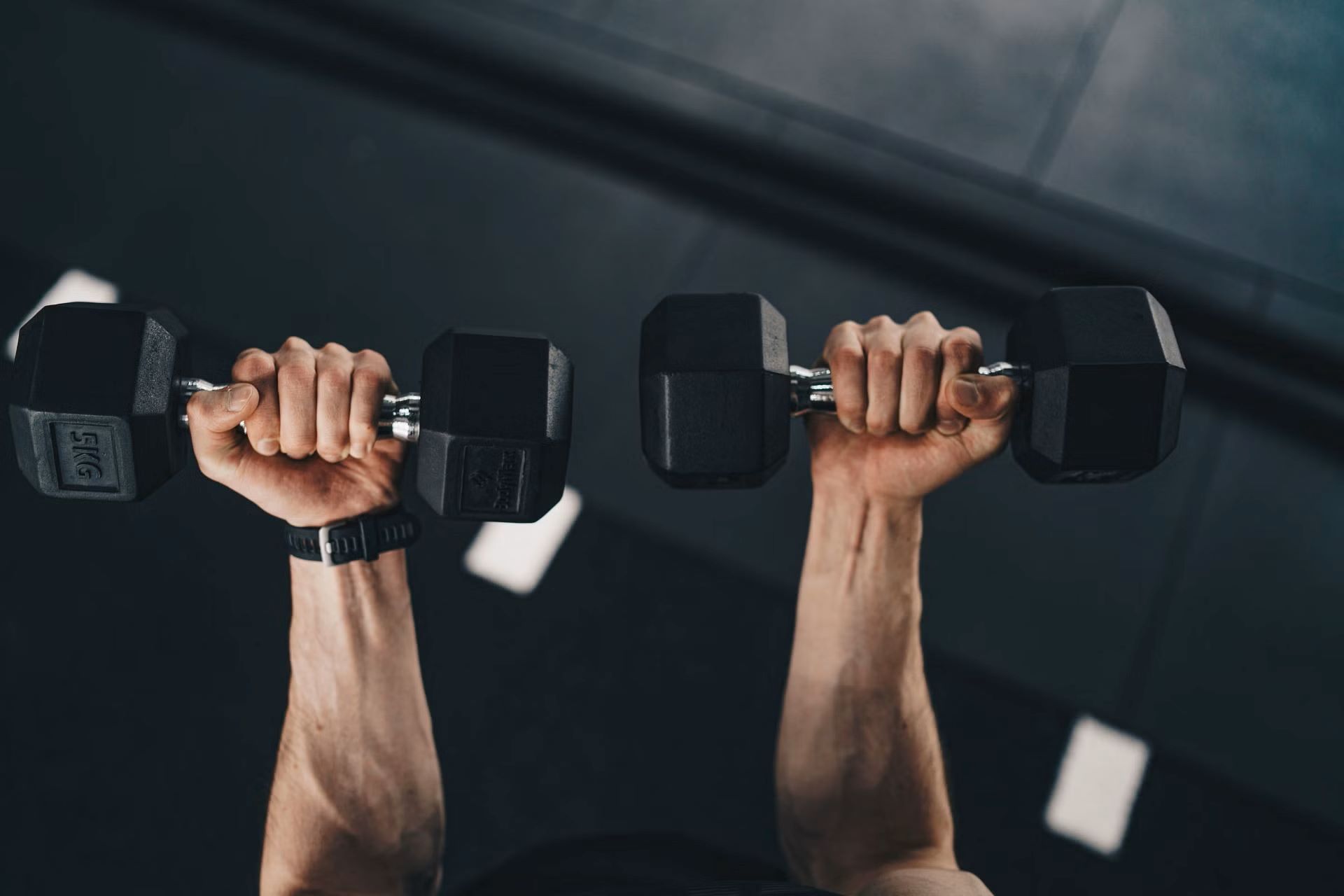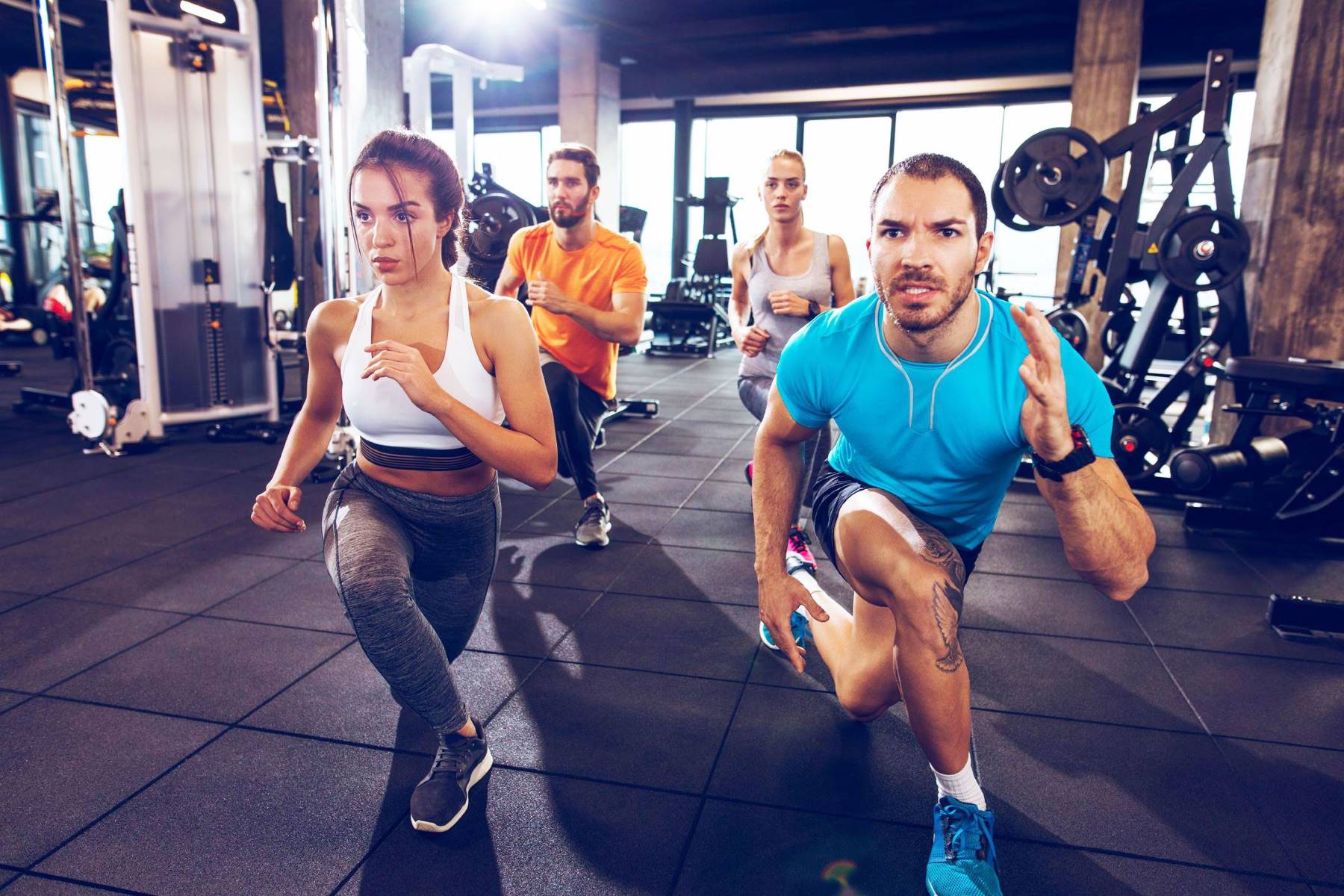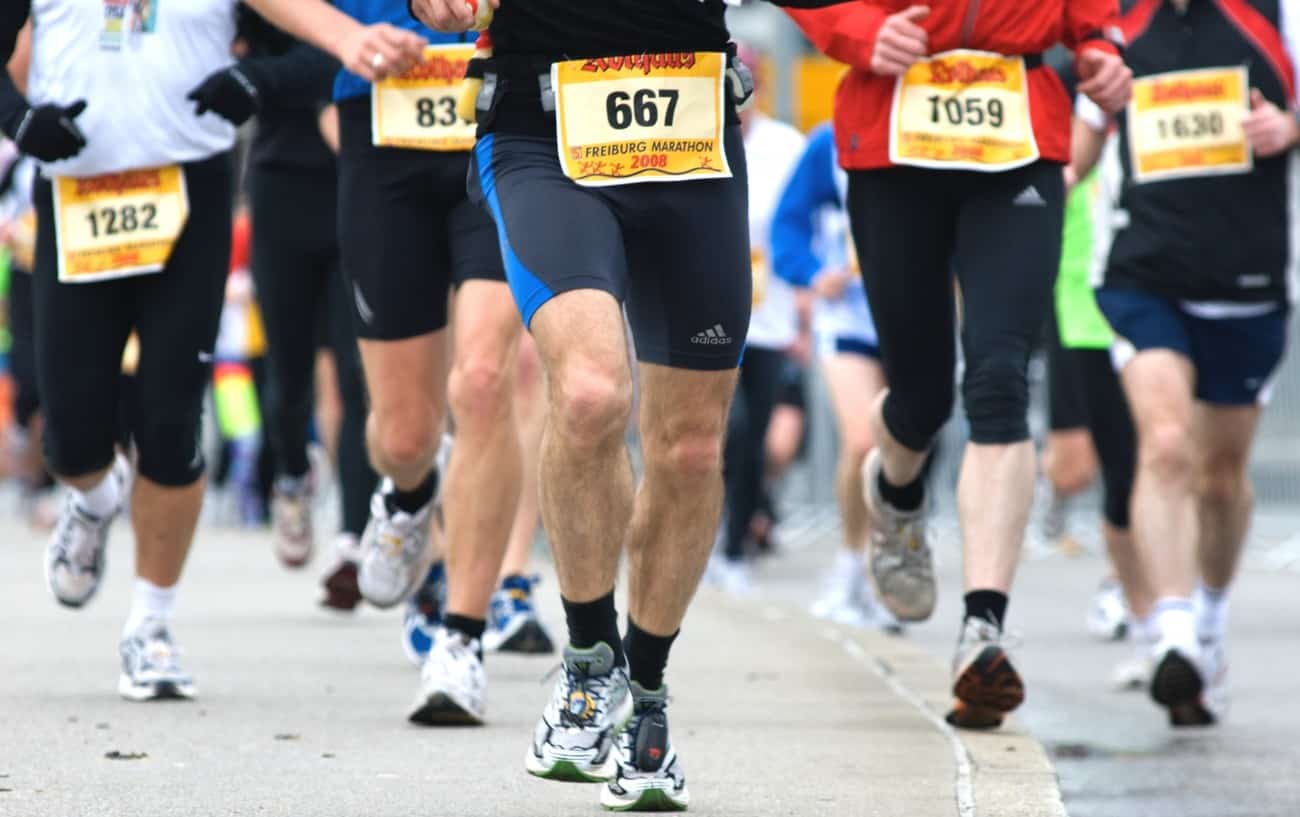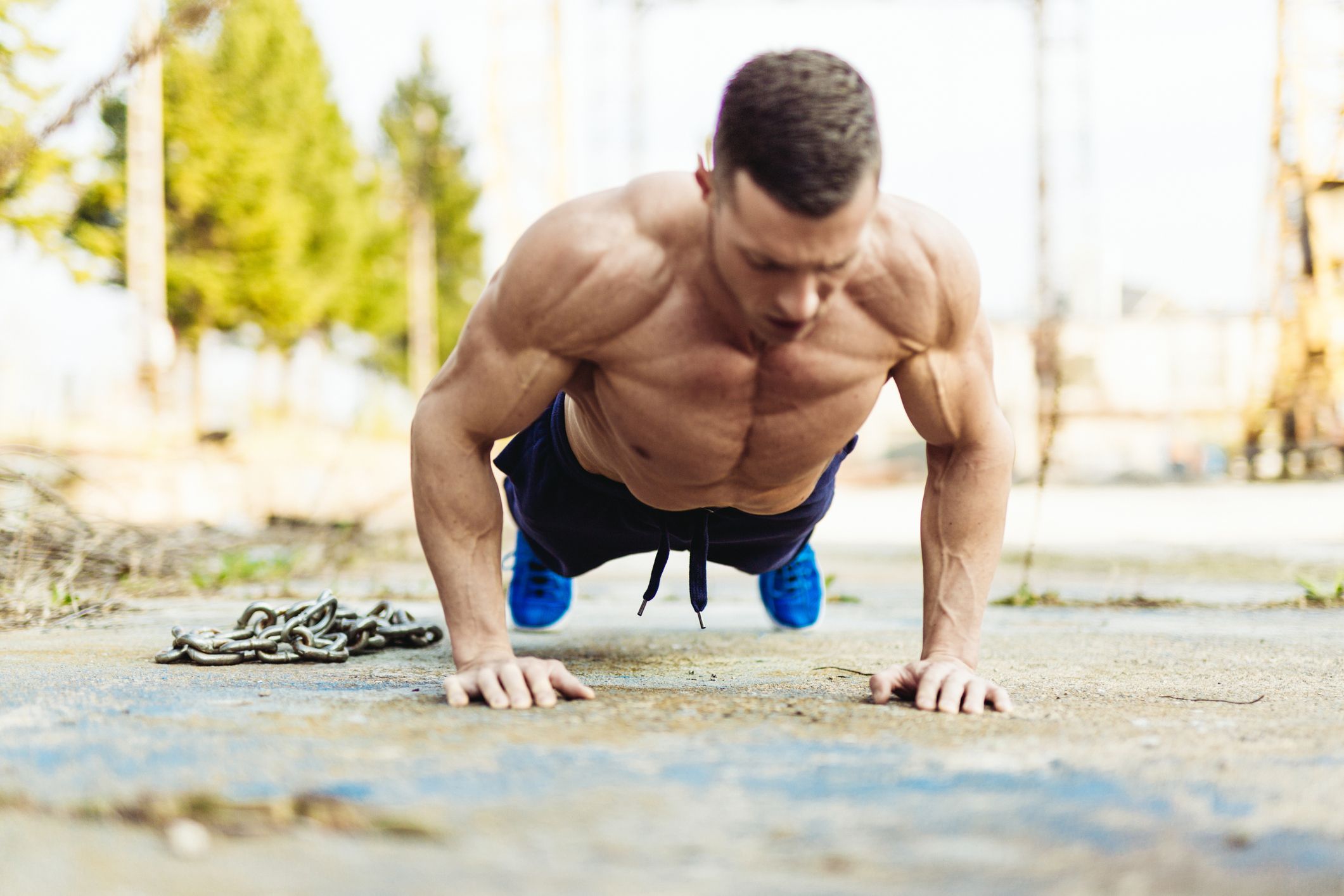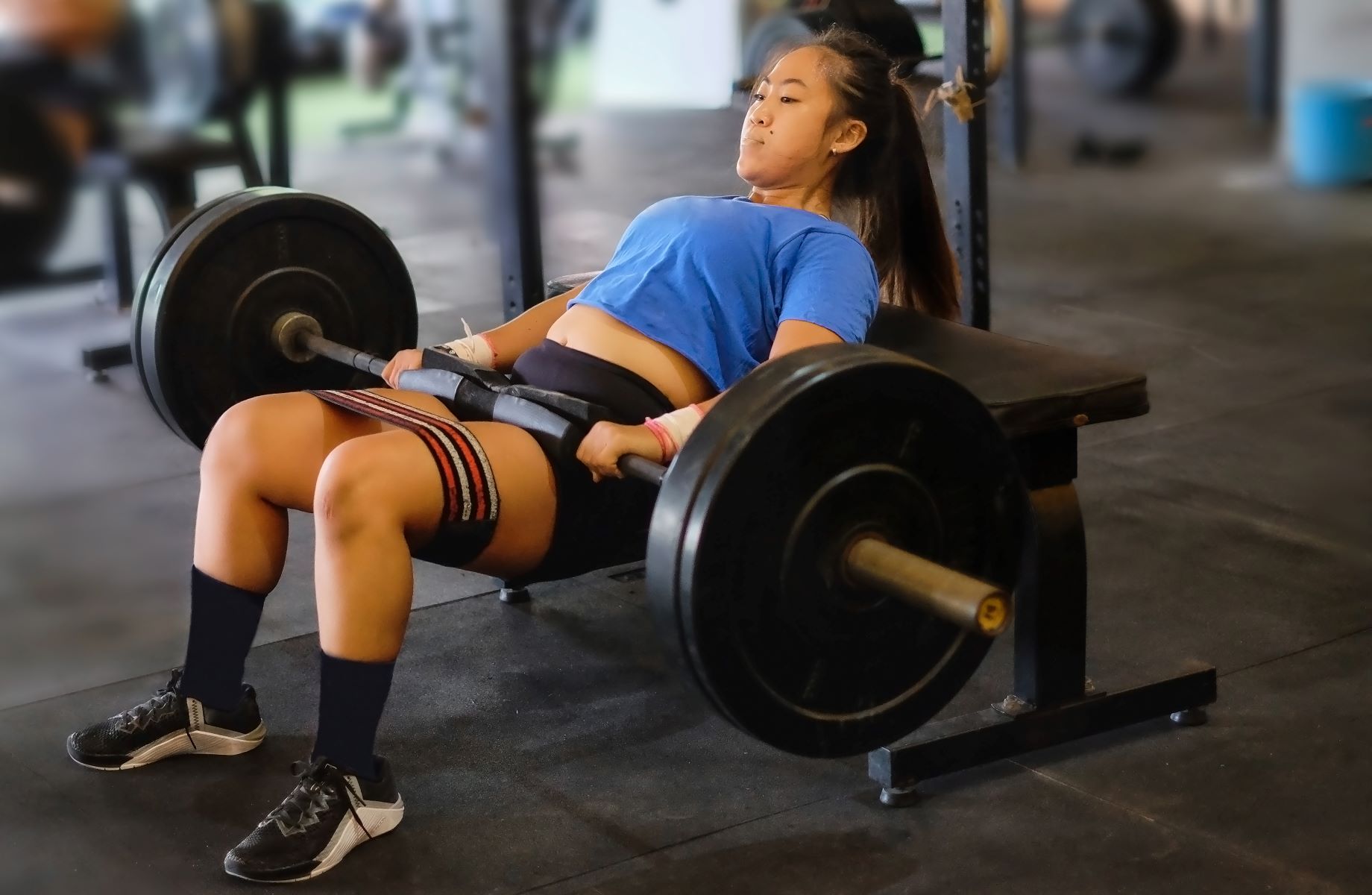

Featured
What Does Hip Thrust Workout
Modified: January 2, 2024
Discover the benefits of hip thrust workout with our featured exercises. Tone your glutes, strengthen your lower body, and achieve your fitness goals with this powerful routine.
Introduction
Are you looking for a powerful lower body exercise that can help you build strength, increase muscle mass, and improve your athletic performance? Look no further than the hip thrust workout. While often overlooked, the hip thrust is a highly effective exercise that targets your glutes, hamstrings, and core muscles. Whether you are a seasoned athlete or a fitness enthusiast, incorporating hip thrusts into your workout routine can take your training to the next level.
The hip thrust exercise gained popularity thanks to Bret Contreras, a renowned strength and conditioning coach and researcher. This exercise involves driving the hips upward against resistance, typically using a barbell placed across the pelvis. While it might seem simple, the hip thrust engages a large number of muscles and offers various benefits that make it a valuable addition to any training program.
One of the primary benefits of the hip thrust workout is its ability to activate and strengthen the gluteal muscles. These muscles, including the gluteus maximus, medius, and minimus, play a crucial role in hip extension, pelvic stability, and overall lower body strength. Building stronger glutes can improve your athletic performance in activities such as running, jumping, and lifting heavy objects.
Besides enhancing your strength and athletic performance, hip thrusts also have aesthetic benefits. Regularly performing this exercise can help you shape and lift your glutes, giving you a more defined and sculpted lower body. Additionally, hip thrusts can help improve posture and overall movement mechanics, reducing the risk of lower back pain and other injuries.
One of the reasons why the hip thrust exercise is so effective is because it allows for progressive overload. You can continuously increase the weight used, making the exercise more challenging over time and stimulating muscle growth. Whether you are an experienced weightlifter or a beginner, you can easily modify the hip thrust to suit your fitness level and goals.
In the following sections, we will explore the muscles targeted in hip thrusts, proper form and technique, common mistakes to avoid, variations of the exercise, and strategies for incorporating hip thrusts into your workout routine. By the time you finish reading, you will have all the knowledge you need to start reaping the amazing benefits of the hip thrust workout.
Benefits of Hip Thrust Workout
The hip thrust workout offers a wide range of benefits that make it a valuable addition to any fitness routine. Let’s take a closer look at some of the key advantages:
- Strengthening the Glutes: One of the primary benefits of hip thrusts is their ability to target and strengthen the gluteal muscles. Building strong glutes not only enhances your athletic performance but also promotes better posture and reduces the risk of lower back pain.
- Improving Hip Extension: Hip thrusts specifically target the hip extensor muscles, including the gluteus maximus, hamstrings, and adductor magnus. Strengthening these muscles can lead to more powerful and explosive movements, such as jumping, sprinting, and lifting heavy weights.
- Increasing Muscle Mass: The hip thrust exercise is a powerful tool for hypertrophy, or muscle growth. By progressively increasing the weight and intensity of hip thrusts, you can stimulate muscle fibers and promote muscle growth in the glutes and hamstrings.
- Enhancing Athletic Performance: Strong and well-developed glutes are essential for various sports and athletic activities. Hip thrusts can improve your performance in activities that require hip extension, such as running, cycling, and squatting.
- Improving Aesthetic Appearance: Regularly incorporating hip thrusts into your workout routine can help shape and lift your glutes, giving you a more defined and sculpted lower body. Strong and shapely glutes can enhance your overall physique and boost your confidence.
- Stabilizing the Pelvis: The hip thrust exercise engages the core muscles, including the abdominals and obliques, helping to stabilize the pelvis and improve overall posture. This can have a positive impact on your daily activities and reduce the risk of lower back injuries.
These are just a few of the many benefits you can expect from incorporating the hip thrust workout into your fitness routine. Whether your goal is to build strength, increase muscle mass, improve athletic performance, or enhance the aesthetics of your lower body, hip thrusts can be a game-changer. Now, let’s explore the specific muscles targeted in hip thrusts and learn how to perform this exercise correctly.
Muscles Targeted in Hip Thrusts
Hip thrusts are an incredibly effective exercise that targets several key muscles in the lower body. By understanding the muscles engaged during hip thrusts, you can maximize your training and achieve optimal results. Here are the main muscle groups targeted in hip thrusts:
- Gluteus Maximus: The gluteus maximus is the largest muscle in the gluteal group and is responsible for hip extension. It is the primary muscle targeted in hip thrusts and plays a crucial role in generating power and explosiveness.
- Hamstrings: The hamstrings are a group of three muscles located on the back of the thigh. During hip thrusts, the hamstrings work synergistically with the glutes to extend the hips and contribute to overall lower body strength.
- Quadriceps: The quadriceps, or the front thigh muscles, also play a supportive role in hip thrusts. While the primary focus is on the glutes and hamstrings, the quadriceps help stabilize the knee joint and assist with hip extension.
- Adductor Magnus: The adductor magnus, located on the inner thigh, is another muscle engaged during hip thrusts. This muscle assists in hip extension and provides stability to the pelvis and thigh during the exercise.
- Erector Spinae: The erector spinae muscles, located along the spine, are activated during hip thrusts to provide stability to the lower back and maintain proper alignment of the spine.
- Core Muscles: While the primary focus of hip thrusts is on the lower body, this exercise also engages the core muscles, including the abdominals and obliques, to provide stability and support throughout the movement.
By effectively targeting these muscle groups, hip thrusts provide a comprehensive lower body workout that can improve strength, power, and functional movement. It’s important to note that the intensity and emphasis on each muscle group can vary depending on factors such as body positioning, load used, and technique. Now that you have a clear understanding of the muscles targeted in hip thrusts, let’s move on to the next section to learn the proper form and technique for performing this exercise.
How to Perform a Hip Thrust Exercise
The hip thrust exercise may seem simple, but proper form and technique are crucial to maximize its benefits and prevent injury. Follow these steps to perform a hip thrust correctly:
- Set Up: Start by positioning a bench or step against a wall. Sit on the ground with your back against the bench and your knees bent, feet flat on the floor about hip-width apart. Place a barbell across your hips or use alternative resistance such as dumbbells or a resistance band.
- Positioning: Roll the barbell up towards your pelvis, ensuring it is securely placed. If using dumbbells or a resistance band, hold them firmly against your hips. Position your feet shoulder-width apart, with your toes pointing slightly outward.
- Engage the Core: Before initiating the movement, engage your core muscles by drawing your belly button towards your spine. This will help stabilize your spine and maintain proper alignment throughout the exercise.
- Lift the Hips: Press through your heels and drive your hips upward in a controlled motion. Focus on squeezing your glutes and engaging your hamstrings as you lift. Keep your back straight and avoid overarching or hyperextending your spine.
- Reach Full Extension: At the top of the movement, your body should form a straight line from your knees to your shoulders. Squeeze your glutes at the top for a brief pause before lowering your hips back down.
- Lower with Control: Slowly lower your hips back down, maintaining tension in your glutes and hamstrings. Avoid letting your hips drop too quickly or bouncing at the bottom of the movement.
- Repeat: Perform the desired number of repetitions, focusing on maintaining proper form throughout. Aim for a controlled tempo and full range of motion to fully engage the targeted muscles.
Remember, it’s essential to start with a weight or resistance that allows you to maintain proper form and control. Gradually increase the load as your strength and comfort with the exercise improve. If you are new to hip thrusts or have any concerns about your technique, it can be helpful to seek guidance from a qualified fitness professional.
Now that you know how to perform a hip thrust exercise correctly, let’s explore the common mistakes to avoid to ensure you get the most out of this workout.
Common Mistakes to Avoid
To get the most out of your hip thrust workout and to minimize the risk of injury, it’s important to be aware of and avoid common mistakes. Here are some common errors to watch out for when performing hip thrusts:
- Using Excessive Weight: One of the most common mistakes is using too much weight, compromising form and stability. It’s crucial to start with a weight that allows you to maintain proper technique and gradually increase the load as your strength improves.
- Arching the Lower Back: Many people tend to hyperextend their lower back at the top of the movement, causing excessive strain on the spine. Instead, focus on maintaining a neutral spine throughout the exercise, engaging your core muscles to support your back.
- Leaning Too Far Back: Leaning too far back during the hip thrust can shift the workload away from the glutes and onto the lower back. Keep your torso upright and focus on driving the hips upward using the glutes and hamstrings.
- Raising the Hips Too High or Too Low: While it’s important to reach full hip extension at the top of the movement, excessively raising the hips or not reaching full extension can diminish the effectiveness of the exercise. Aim to achieve a straight line from your knees to your shoulders at the top position.
- Losing Control of the Weight: It’s essential to maintain control throughout the entire range of motion. Avoid letting the weight drop quickly or bouncing at the bottom of the movement. Maintain a slow and controlled tempo to fully engage the muscles and reduce the risk of injury.
- Neglecting Core Engagement: Your core muscles play a vital role in stabilizing your spine during the hip thrust. Failing to engage your core can put unnecessary stress on your back. Remember to activate your core by drawing your belly button towards your spine before initiating the movement.
- Rushing Through the Repetitions: It’s important to perform hip thrusts with proper control and focus. Rushing through the exercise can compromise form and diminish the effectiveness of the workout. Maintain a controlled tempo, fully contracting the glutes at the top of each repetition.
By paying attention to these common mistakes and focusing on correct form and technique, you can maximize the benefits of the hip thrust exercise while reducing the risk of injury. Now that you are aware of the common mistakes to avoid, let’s explore some variations of the hip thrust that you can incorporate into your training routine.
Variations of Hip Thrusts
The hip thrust exercise offers various variations that can add variety to your training routine and target the muscles in slightly different ways. Incorporating these variations can help you break through plateaus, challenge your muscles in new ways, and keep your workouts exciting. Here are some popular variations of the hip thrust:
- Single-Leg Hip Thrust: Perform the hip thrust with one leg elevated off the ground, focusing on the working leg. This variation adds an extra challenge to your glutes and hamstrings, as well as engages your core for stability.
- Feet-Elevated Hip Thrust: Place your feet on an elevated platform or bench while performing the hip thrust. This modification increases the range of motion and places a greater emphasis on the hamstrings and glutes.
- Banded Hip Thrust: Attach a resistance band around your thighs, just above your knees, during the hip thrust exercise. The band adds resistance and activates the gluteus medius, further challenging your hip abductor muscles.
- Barbell Hip Thrust March: While performing the hip thrust, alternate lifting each foot off the ground, mimicking a marching motion. This variation adds an element of dynamic stability and activates the hip flexor muscles.
- Sumo Stance Hip Thrust: Widen your stance and turn your toes outwards to perform the hip thrust. This variation targets the glutes, adductors, and inner thighs to a greater extent, providing a different muscle stimulus.
- Paused Hip Thrust: At the top of the hip thrust movement, hold the position for a few seconds before lowering your hips back down. This variation enhances time under tension and increases the challenge on the glutes and hamstrings.
- Weighted Hip Thrust: Use a heavier load, such as a barbell or weighted plates, to increase the resistance during the hip thrust exercise. Gradually increase the weight as your strength improves to continue challenging your muscles.
These variations can be incorporated into your workout routine based on your fitness level and specific goals. It’s important to maintain proper form and technique throughout each variation, ensuring that you engage the correct muscles and prevent injury.
Now that you’re familiar with different variations of the hip thrust exercise, let’s move on to the next section to discover how to incorporate these exercises into your overall workout routine.
Incorporating Hip Thrusts into Your Workout Routine
To fully benefit from the hip thrust exercise, it’s important to incorporate it strategically into your overall workout routine. Here are some tips to help you effectively include hip thrusts in your training:
- Choose the Right Frequency: Determine how often you want to perform hip thrusts based on your individual goals and recovery abilities. For most individuals, 2-3 times a week is sufficient to see progress. Remember to allow for proper rest and recovery between sessions.
- Include a Variety of Rep Ranges: Incorporate different rep ranges into your hip thrust workouts to stimulate muscle growth and strength gains. Aim for a mix of low-rep, high-intensity sets to build strength, and higher-rep sets to promote muscular endurance and hypertrophy.
- Pair with Complementary Exercises: Combine hip thrusts with other lower body exercises to create a well-rounded workout. Squats, lunges, deadlifts, and step-ups are examples of exercises that can synergistically target the lower body muscles and enhance your overall lower body strength and development.
- Progressively Increase the Load: Gradually increase the weight or resistance used during hip thrusts over time to challenge your muscles and promote continuous growth. Add extra weight in small increments to maintain proper form and technique.
- Warm Up Properly: Prior to performing hip thrusts, it’s important to warm up adequately to prepare your muscles and joints for the exercise. Perform dynamic stretches, such as leg swings or hip circles, and incorporate activation exercises, like glute bridges or clamshells, to prime the glutes and activate the muscles involved in the hip thrust.
- Listen to Your Body: Pay attention to how your body responds to the hip thrust exercise. If you experience any discomfort or pain, modify the exercise or consult with a fitness professional to ensure you are performing it correctly and safely.
- Track Your Progress: Keep a training log to track your hip thrust performance. Record the weight used, the number of reps and sets completed, and any other relevant details. This will help you monitor your progress over time and make informed adjustments to your workouts.
Remember that proper form and technique are paramount when performing hip thrusts. It’s always beneficial to seek guidance from a qualified fitness professional to ensure you are performing the exercise correctly and maximizing its benefits.
Now that you have a clear understanding of how to incorporate hip thrusts into your workout routine, you’re ready to experience the transformative effects of this exercise. Start adjusting your training program today and enjoy the benefits of stronger glutes, improved lower body strength, and enhanced athletic performance!
Conclusion
The hip thrust workout is a highly effective exercise that targets and strengthens the glutes, hamstrings, and core muscles. By incorporating hip thrusts into your training routine, you can reap numerous benefits, including improved lower body strength, enhanced athletic performance, increased muscle mass, and better aesthetics.
Proper form and technique are essential when performing hip thrusts. Avoid common mistakes such as using excessive weight, arching the lower back, and rushing through repetitions. Focus on engaging the correct muscles, maintaining a neutral spine, and controlling the tempo of the movement to maximize the benefits and reduce the risk of injury.
There are also various variations of the hip thrust exercise that you can explore to add diversity and challenge to your workouts. Single-leg hip thrusts, weighted hip thrusts, and feet-elevated hip thrusts are just a few examples of variations that can target the muscles in slightly different ways and provide unique benefits.
When incorporating hip thrusts into your workout routine, consider factors such as frequency, rep ranges, and pairing them with complementary exercises. Gradually increase the load over time and track your progress to ensure continuous improvement and growth.
As you embark on your hip thrust journey, remember to warm up properly, listen to your body, and seek guidance from a qualified fitness professional if needed. By following these guidelines and staying consistent with your training, you can experience the transformative effects of stronger glutes, improved lower body strength, and enhanced athletic performance.
So why wait? Start incorporating hip thrusts into your workout routine today and unlock the incredible benefits that this exercise has to offer. Take the first step towards a stronger, fitter, and more powerful lower body.

